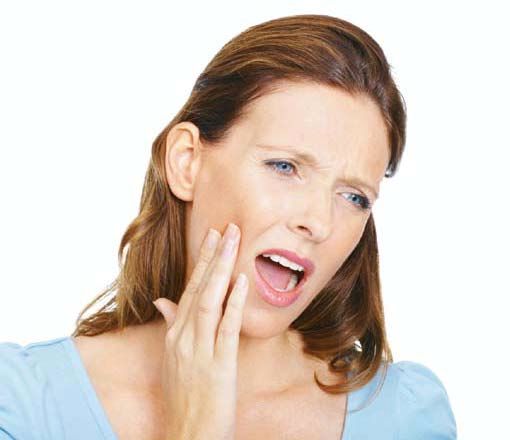Publication
Article
Pharmacy Times
Oral Pain Relief Products
Author(s):
Pharmacists can help patients navigate the many types of OTC products formulated to alleviate the pain caused by common oral conditions.

Many common conditions cause oral pain or discomfort. Examples of these conditions include toothaches; tooth sensitivity; teething; minor oral mucosal injury or irritation; oral mucosal disorders, such as recurrent aphthous stomatitis ([RAS], canker sores); herpes simplex labialis ([HSL], cold sores/fever blisters); and xerostomia (dry mouth). There are OTC products available for the self-treatment of each of these sources of oral pain and discomfort, including topical analgesics/anesthetics, toothpastes formulated for sensitive teeth, artificial saliva products for dry mouth, and oral mucosal protectants, as well as products that provide treatment of and relief from pain due to cold sores.
TOOTH PAIN
OTC oral anesthetics for tooth pain include products containing 5% to 20% benzocaine or 0.5% phenol (Table). Currently, there are no products marketed for pediatric teething pain that contain 0.5% phenol. However, there are phenol-containing products for other types of oral pain.1 Most pediatric teething products contain 7.5% benzocaine, but some nighttime formulas may contain 10% benzocaine. These topical analgesics are available in liquid and gel formulations.1 Patients should be advised that benzocaine may cause hypersensitivity reactions. If redness or irritation of the gums occurs after topical application, the use of the product should be discontinued.1
RAS/CANKER SORES
OTC products available for symptomatic relief of RAS include oral debriding and wound cleansing products and topical oral anesthetics, as well as topical oral protectants and rinses (Table). Cleansing and debriding agents contain carbamide peroxide
(10%-15%), hydrogen peroxide (3%), or sodium bicarbonate.1 These products can be used 4 times daily after meals for no more than 7 days, and should not be swallowed. Prolonged use of debriding and cleansing agents can lead to tissue irritation
and decalcification of tooth enamel.1
Patients may elect to use topical oral anesthetics for pain relief in combination with topical oral protectants to coat the lesions. Topical oral protectants can be applied as needed, but only provide temporary relief of discomfort.1 In addition, oral antiseptic rinses may aid in the healing of lesions. Patients should be advised to seek care from their primary health care provider if symptoms worsen, show no signs of improvement after 7 days of self-treatment, or do not heal in 14 days.1
HSL/COLD SORES
The FDA has advised that the use of topical skin protectants and external topical analgesic/anesthetic products can provide symptomatic relief for individuals with HSL, but they will not reduce the duration of an HSL outbreak. Currently, docosanol 10% is the only FDA-approved OTC agent proven to reduce the duration and severity of an HSL outbreak.1
There are a myriad of products available, however, to provide relief from the pain associated with an HSL outbreak. Topical skin protectants, such as allantoin and petrolatum, may aid in protecting the lesions from infection and relieve dryness. Patients should be advised to consult their primary health care provider if lesions do not heal within 14 days, if signs of infection appear, or if their condition worsens.1
XEROSTOMIA
Various artificial salvia substitutes are available in the form of sprays, liquids, gels, mouthwashes, and chewing gums to provide relief to individuals who experience xerostomia. Xerostomia can increase an individual’s risk of dental decay, infections, and periodontal disease.1 Pharmacists can be instrumental in identifying patients who may be more susceptible to experiencing dry mouth, such as those taking certain pharmacologic agents, including anticholinergic agents, antihypertensives, antihistamines, diuretics, and antidepressants. Patients with certain disease states or conditions, such as
Sjogren’s syndrome or diabetes, may also be more likely to experience dry mouth.1 Nonpharmacologic causes of xerostomia
may include the use of alcohol, caffeine,
and tobacco.1
CONCLUSION
In general, the goals involved in the treatment of minor oral pain are to provide immediate symptomatic relief from discomfort
and irritation and to promote healing. Patients should be assessed for the appropriateness of therapy and educated on the proper use of these products. Pharmacists should advise patients to seek medical care if their conditions worsen or
show signs of infection. PT

References
1. Marciniak M. Oral Pain and Discomfort. In: Berardi R, Newton G, McDermott JH, et al, eds. Handbook of Nonprescription Drugs. 16th ed. Washington, DC: American Pharmacists Association; 2006: 601-623
Ms. Terrie is a clinical pharmacy writer based in Haymarket, Virginia.







